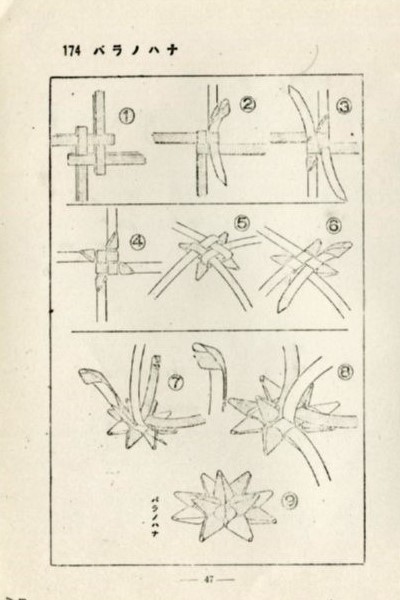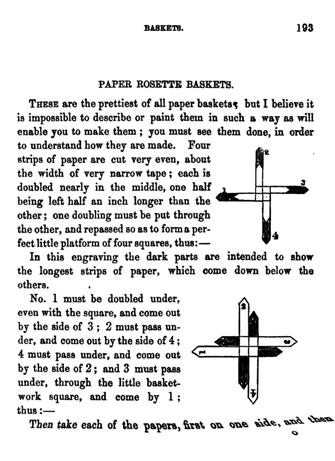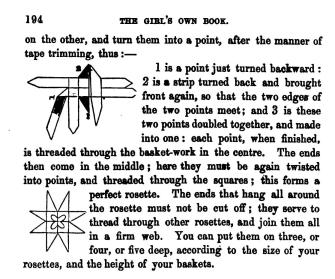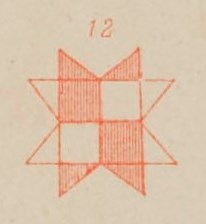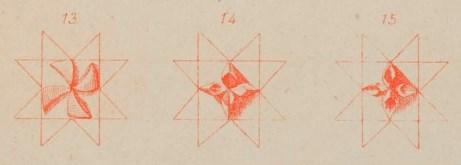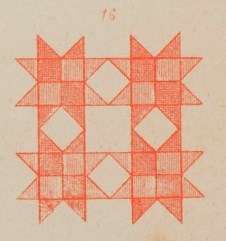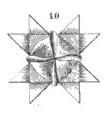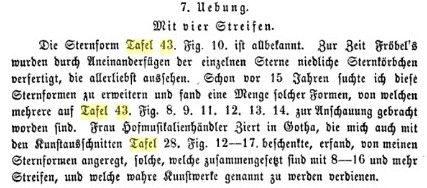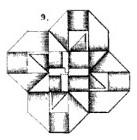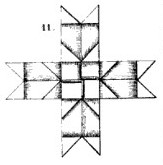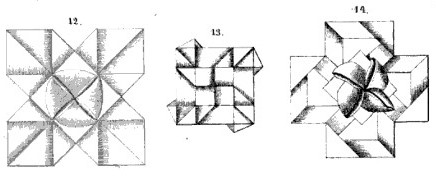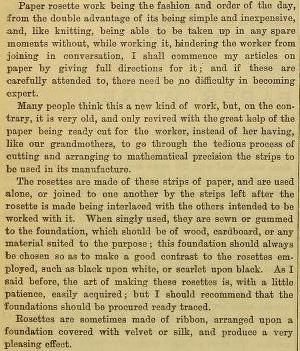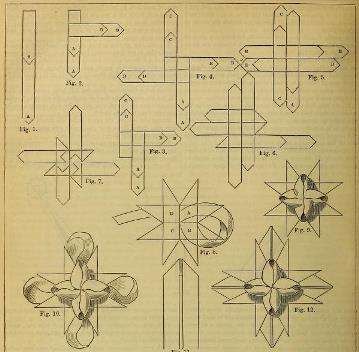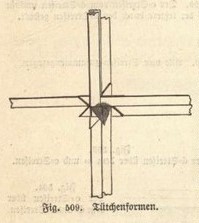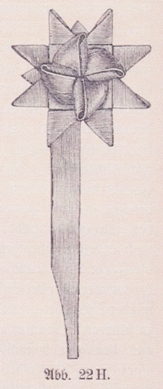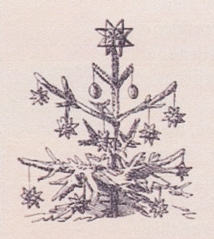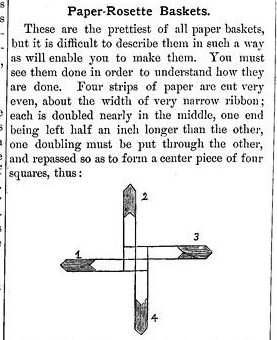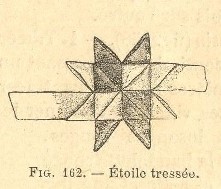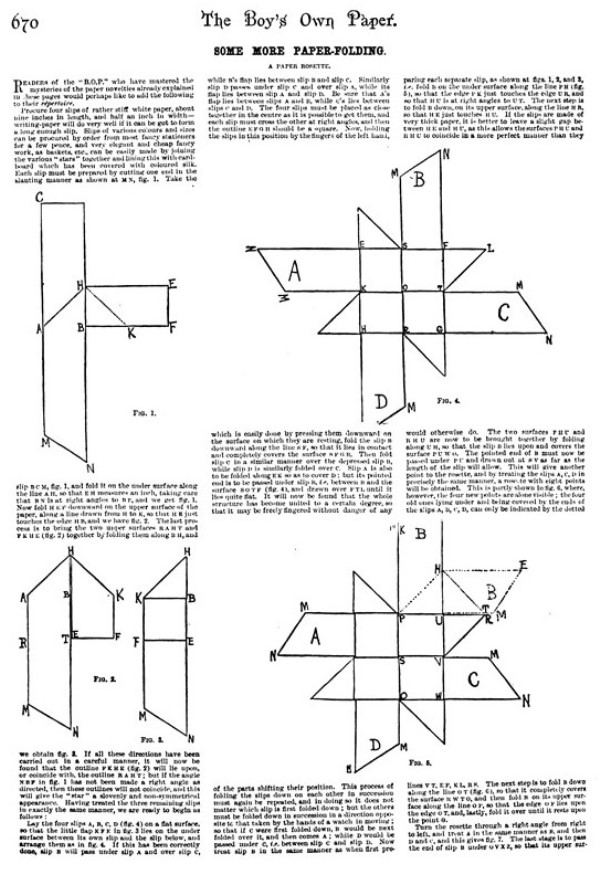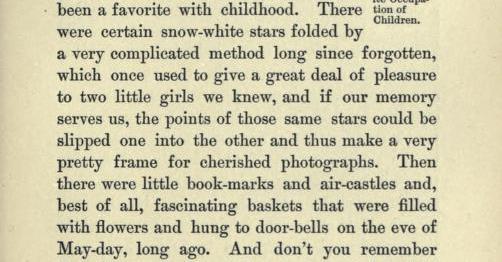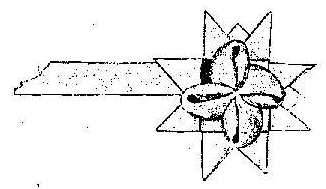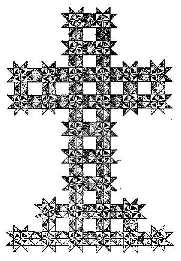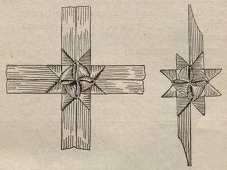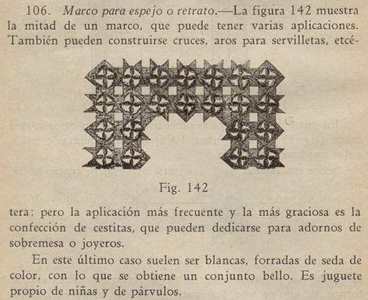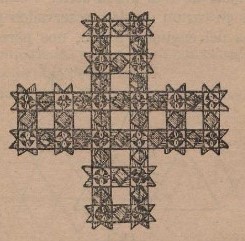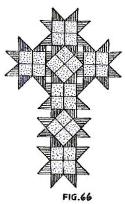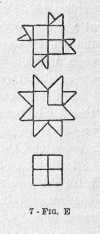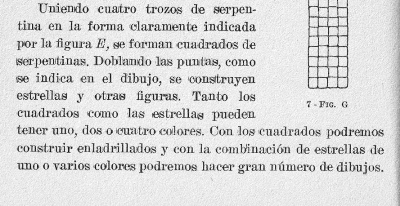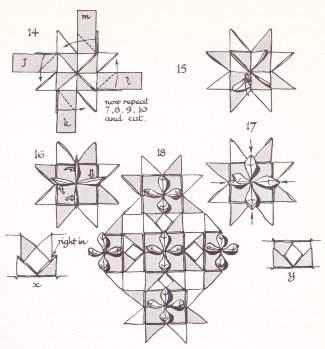| The Public Paperfolding History Project
Last updated 25/7/2024 x |
|||||||
| Paper Rosettes / Froebel Star / German Star / Swedish Star | |||||||
| This
page is being used to collect information about the
history of the paperfolding design known as the Froebel
Star / German Star / Swedish Star and by many other
names. Please contact me if you know any of this
information is incorrect or if you have any other
information that should be added. Thank you. ********** In Japan (and in publications by Japanese authors) 1932 According to information received from Koshiro Hatori diagrams for the Froebel Star appear in 'Origami (Part 2)' by Isao Honda, which was published in Japan, in Japanese, in 1932. ********** 1944 The Froebel Star appears as 'Baranohana' (rose) in 'Origami Shuko' by Isao Honda, which was published in 1944.
********** In Europe and the Americas 1833 As far as I know this design first appears in the historical record in 'The Girl's Own Book' by Lydia Marie Child, which was published by Clark Austin and Co in New York in 1833.
********** 1863 'De Kleine Papierwerkers: Volume 2: Wat men uit strookjes papier al vlechten kan' which was published by K H Schadd in Amsterdam in 1863, contains instructions for making several variations of the design and explains how to join them together to make baskets..
Roughly translated this says, 'Plaiting these loose ends of paper awakened another memory in the children's mother. 'I truly believe,' she said, 'that I also know a piece of art that belongs to paper weaving. It is very old because my grandmother taught it to me.'
Roughly translated this says, 'The connection of these stars creates lovely little baskets, which can be made square, round or elongated and provided with a handle. Pictures 13, 14 and 15 each show a different way of decorating a star.'
********** The design also appears: 1873 In 'Die Praxis Des Kindergartens' by Auguste Koehler, which was published by Herman Bohlau in Weimar in 1873. The text says that in Froebel's time the basic stars (shown in picture 10) were joined together to make 'girdles that look lovely' The author states that, about 15 years ago, so in c1858, he discovered some variations. These are shown in pictures 8, 9, 11, 12, 13 and 14. The author also mentions that a lady H (whose name I cannot transliterate successfully) invented further variations which 'deserve to be called true Artworks', but, as far as I can see, these designs are not pictured in the book.
********** As 'Paper Rosettes' in 'The Popular Recreator', which was published by Cassell and Co in London in 1873 . The author of the work, whose name is not given, comments that Paper Rosette work is the 'fashion and order of the day' and that 'The purposes for which the paper rosettes can be used are too numerous to mention'.
********** In 'Paper Rosette Work and How to Make It' by William Bemrose, which is said to have been first published in 1873.
********** In 'Church Decoration in Paper Rosette Work' by William Bemrose, which was also probably published in 1873 or shortly thereafter. ********** 1874 In 'Spiel und Arbeit' by Hugo Elm, which was published by Verlag und Drud der Otto Spamer in Leipzig in 1874. The text says, 'This also includes a very favourite activity which occurs in Thuringia under the name 'star-making'. The 'stars' obtained in this way are used as ornaments for the Christmas tree and used to decorate it.'
********** 1876 In 'Des Kindes Erste Beschaftigungsbuch' by E Barth and W Niederley, which was first published in Bielefeld and Leipzig, and the foreword of which is dated October 1876.
********** 1887 As 'Paper-Rosette Baskets' in 'The Home Book for Very Little People' by J H Vincent, which was published by Phillips and Hunt in New York in 1887.
********** 1882 In Part two of 'The Kindergarten Guide' by Maria Kraus Boelte and John Kraus, which was probably first published by E. Steiger and Company in New York in 1882.
********** 1891 In 'Pleasant Work for Busy Fingers' by Maggie Browne, which was published by Cassell and Company in London in 1891. This book is an English version of 'Des Kindes Erste Beschaftigungsbuch' enhanced by the addition of a few extra designs. ********** 1893 In 'L'Annee Preparatoire de Travail Manuel' by M P Martin, which was published by Armand Collin & Cie in Paris in 1893.
********** 1894 As 'A Paper Rosette' in issue 810 of the 'Boy's Own Paper' for 21st July 1894.
********** 1896 In part 2 of 'The Republic of Childhood', titled 'Froebel's Occupations', which was published by Houghton, Mifflin and Company, of Boston and New York in 1896, Kate Douglas Wiggin and Nora Archibald Smith. The design is not named in the text but I believe it can be identified from the description.
********** 1903 In 'La Ensenanza del Trabajo Manuel' by Pedro de Alcántara García and Teodosio Leal y Quiroga, which was published in Madrid in 1903, contains diagrams for the basic star and pictures a large cross made by linking multiple stars together.
********** 1904 In 'Guia Practica del Trabajo Manual Educativo' by Ezequiel Solana, which was published by Editorial Magisterio Español in Madrid in 1904 contains instructions for how to 'Construir une Estrella de Enlace con Ocho Puntas' (Build a Star with Eight Points) ...
... and how to link the resulting stars together to make a 'Marco para Espejo o Retrato (Frame for Mirror or Portrait).
Roughly translated the text here says 'Half of a frame which can have multiple applications. Crosses, napkin rings etc can also be built, but the must frequent and amusing application is that of making baskets which can be used for decorations or jewellery boxes. In the latter case they are usually white, lined with coloured silk, which produces a beautiful ensemble. It is a toy for girls and toddlers.' ********** 1914 As 'Rosettas' in El Trabajo Manual en la Escuela' by Félix Martí Alpera, which was published by Libreria de los Sucesores de Hernando in Madrid in 1914. No instructions for forming the individual rosettes or for linking them together are given bit the text, refers to '8. Construction of rosettes. 9. Combination of these forming flat figures, such as a cross, a border etc. 10. Construction of objects in relief (ie 3D objects) such as a basket, a watepaper bin etc.'
********** 1920 In 'Paper Magic' by Will Blyth, which was first published by C Arthur Pearson in London in 1920, contains diagrams for both the Froebel Star (called a Christmas Star here) ...
... and for an Easter Cross made by combining seven Froebel Stars. Although the stars can be combined without glue the text recommends that paper is pasted on the back to make the design more permanent.
********** 1923 As 'El Pez' in 'Trabajos Manuales y Juegos Infantiles' by Francisco Blanch, which was published by I. G. Seix y Barral Hermanos S.A.- Editores in Barcelona in 1923.
********** 1960 As 'The Star of Bethlehem' in 'Paper Folding Fun' by Robert Harbin, which was published by Oldbourne in London in 1960.
********* 1961 As 'Flechstern' in 'Wir Falten' by Joachim Schönherr and Gerta Schumann, which was published by Rudolf Arnold Verlag in Leipzig in 1961.
********** |
|||||||
